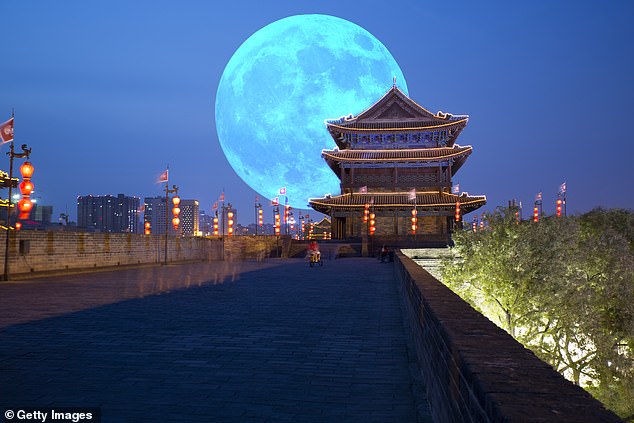 A city in China is planning to launch an ‘artificial moon’ that will light up the skies as far as 50 miles around.
A city in China is planning to launch an ‘artificial moon’ that will light up the skies as far as 50 miles around.
The so-called illumination satellite set to deploy over the southwestern city of Chengdu in 2020 is touted to be eight times as bright as the real moon, to cast a ‘dusk-like glow’ over the region, according to the People’s Daily.
Officials have released few details on the project.
Wu Chunfend, chairman of Chengdu Aerospace Science and Technology Microelectronics System Research Institute Co., Ltd, revealed the plan at an event in the city on Oct 10, People’s Daily reports.
It will complement the moon to make Chengu’s night skies brighter when it launches in 2020, potentially serving as a replacement to conventional streetlights.
The artificial moon can be controlled to light up an area between 10 and 80 kilometres wide 6 to 50 miles).
While it might sound implausible, Wu says the technology has been in the works for years and has now ‘matured’ toward readiness.
Whether the plan will ultimately come to fruition, however, remains to be seen.
HOW DID THE MOON FORM?
Many researchers believe the moon formed after Earth was hit by a planet the size of Mars billions of years ago.
This is called the giant impact hypothesis.
The theory suggests the moon is made up of debris left over following a collision between our planet and a body around 4.5 billion years ago.
The colliding body is sometimes called Theia, after the mythical Greek Titan who was the mother of Selene, the goddess of the moon.
Many researchers believe the moon formed after Earth was hit by a planet the size of Mars billions of years ago. This is called the giant impact hypothesis
But one mystery has persisted, revealed by rocks the Apollo astronauts brought back from the moon: Why are the moon and Earth so similar in their composition?
Several different theories have emerged over the years to explain the similar fingerprints of Earth and the moon.
Perhaps the impact created a huge cloud of debris that mixed thoroughly with the Earth and then later condensed to form the moon.
Or Theia could have, coincidentally, been chemically similar to young Earth.
A third possibility is that the moon formed from Earthen materials, rather than from Theia, although this would have been a very unusual type of impact.
No comments:
Post a Comment